It’s impossible to accurately judge an era while you’re living through it.
That said, some of the images and moments from 2017 loom larger than others.
Here is my list of 17 of the defining stories of 2017, in chronological order.
Future historians and sociologists may disagree, but I’m willing to bet that these are the stories whose impacts we’ll still be feeling and talking about a year — and even a decade — from now.
17 of the Top Stories of 2017
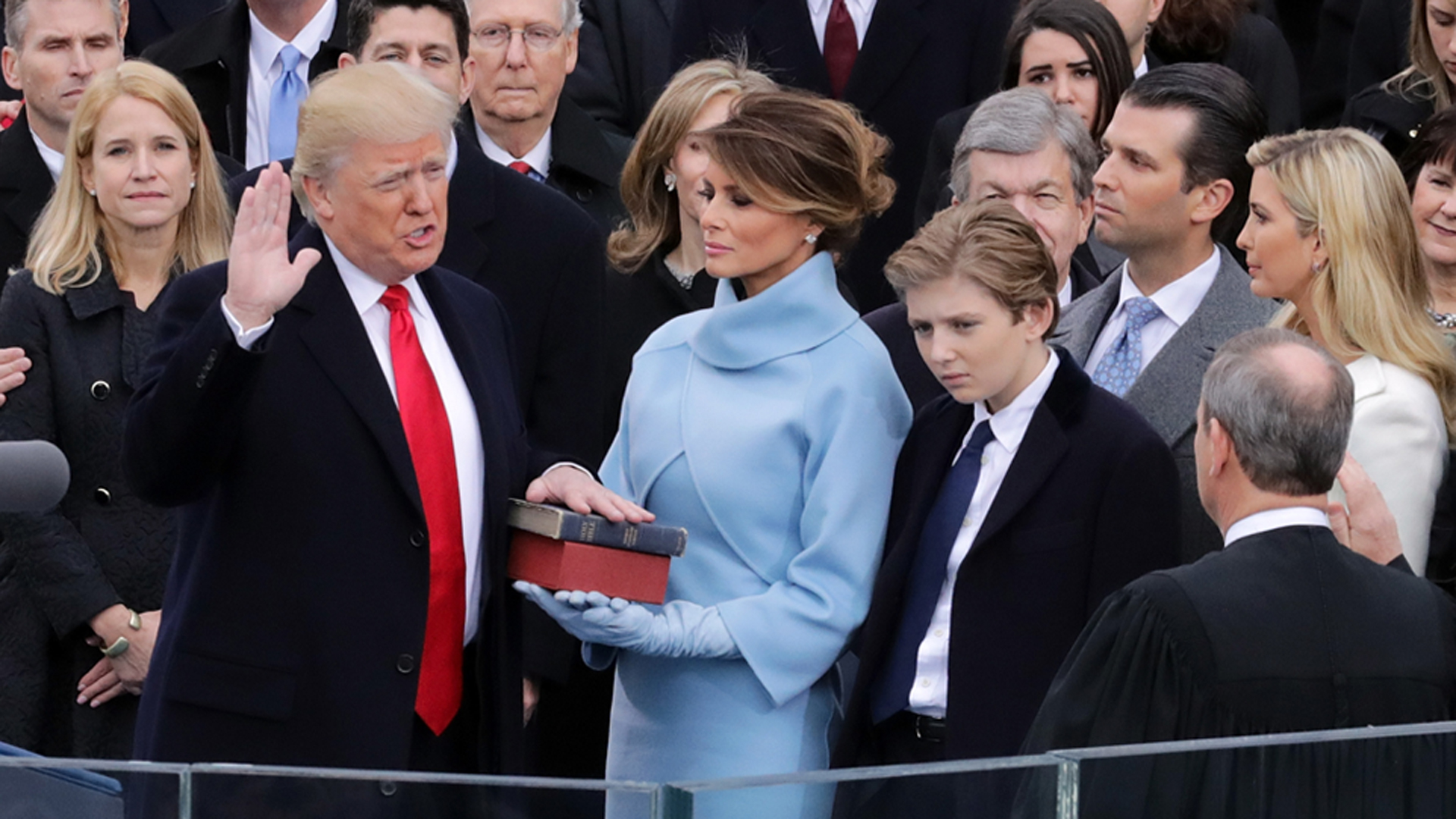
Donald Trump’s Inauguration
For better or worse, love him or hate him, this was the defining story of 2017. And of 2016. And possibly of the whole next decade, depending on how this whole Mueller investigation shakes out.
Honestly, the effects of this moment have led to an entire top 100 list of year-defining stories all by itself.
This moment is responsible for most of the year’s recurring themes (like the rise of “fake news” and the polarized tribalism of American ideologies), its plot twists (like our escalated staredown with North Korea, the surprise firing of James Comey, and the perpetual shakeup of the presidential cabinet), and b-movie characters like Sean Spicer, Steve Bannon, and Kellyanne Conway, who would seem unbelievable if we met them in a film noir, much less in our headlines every day.
As a result, most of 2017 has felt like a reaction to this exact moment.
Fittingly, one of the most directly tangible responses happened almost immediately.
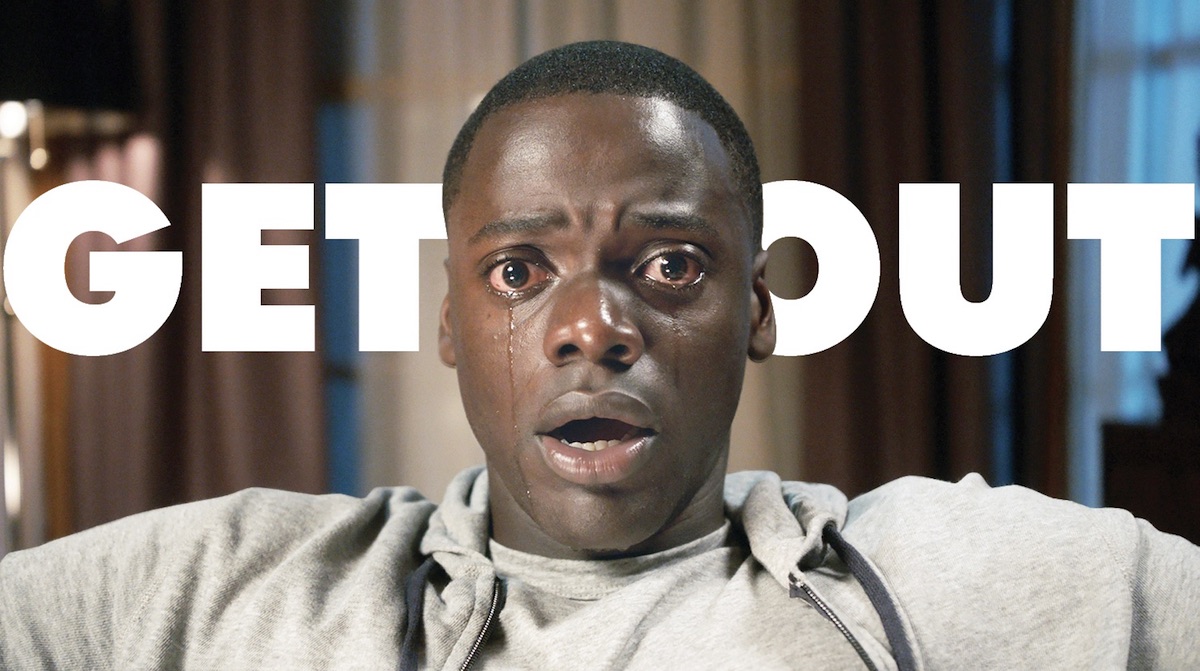
Get Out Becomes a Surprise Smash
One month after Donald Trump was inaugurated, Jason Blum released Get Out.
Directed by Jordan Peele (of Key & Peele fame), Get Out is the story of a biracial couple whose relationship falls apart when her family turns out to be (SPOILER ALERT) mad scientists who literally lobotomize young black men so their bodies can be used to help old white men live longer.
As a commentary on race, politics, and society in 2017, Get Out hits the nail on the head. As a suspense thriller, it’s impeccably directed and well-acted. And as an investment, it performed better than even Jason Blum (the man behind Paranormal Activity, Insidious, and The Purge) could have expected, earning $175 million ($175M) at the U.S. box office on a budget of $4.5M.
But there are still three more eye-opening box office stories to come, including…
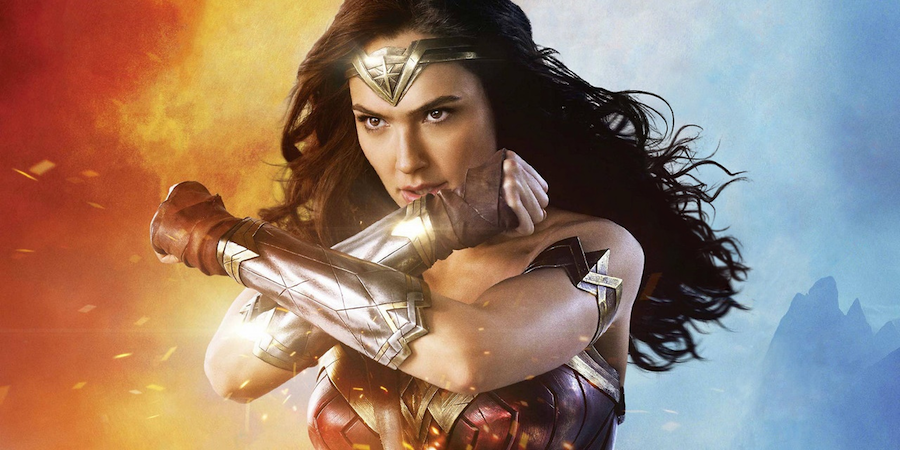
Wonder Woman Becomes DC’s Biggest Hit
“But will anyone pay to see a female action hero?”
In one crisply directed, joyously acted film, director Patty Jenkins (Monster) and actress Gal Gadot (Fast & Furious 6) rendered decades of Hollywood excuses moot.
Not only did Wonder Woman become the first female-directed film to open over $100M, but it went on to earn over $400M at the domestic box office. In the process, it became the DCEU’s highest-grossing movie and the top superhero movie of 2017 at the U.S. box office, beating out new movies from Thor, Spider-Man, and the Guardians of the Galaxy.
By proving that DC’s heroes don’t have to play second fiddle to Marvel, Jenkins and Gadot rewrote fan expectations for the future of the DC Extended Universe… which made the letdown of the Justice League movie later this year sting even harder.
At DC, as in much of the world, the future is female.
It’s also multicultural, as the next story irrevocably proves.
Despacito Breaks YouTube Records
“Despacito,” a reggaeton hit by Luis Fonsi and Daddy Yankee, owned the music charts this summer.
In one of the most telling details of the year, “Despacito” became the first primarily Spanish-language song to top the Billboard Hot 100 in 21 years… since 1996’s “Macarena.”
And while a crossover version featuring Justin Bieber undoubtedly helped raise the song’s profile among English-speaking audiences, it was already a bona fide hit in Spanish well before the Biebs got involved.
In addition to topping the charts in over 40 countries, Despacito also set two YouTube records back-to-back. In August, it became the first YouTube video to ever be viewed 3 billion times.
If you think that’s impressive, guess what record it broke two months later. (Yup. 4 billion.)
So while America’s pop culture is undoubtedly becoming more diverse and inclusive, it’s sadly inevitable that the pendulum would try to swing back with a white fist… and some lawn torches.

Charlottesville Forces America to Reckon with Itself
I could have posted other images here, of angry white men with tiki torches marching in the streets during a chilling revival of Nazi-era white supremacy, or of a president who went out of his way to insist that there were very fine people on both sides of that debate — a debate, which, at its heart, is about whether one group of people deserves to have power over all others.
Instead, here’s a reminder that a woman was killed that day because she believed all humans are equal but a man in a car disagreed.
This may have been the year’s low point, but every story needs clearly-defined stakes, and after Charlottesville, America now has a much clearer understanding of what’s at stake as the country moves forward.
And just days later, we’d be reminded that forward progress keeps marching on, no matter how hard the past tries to hold it back.
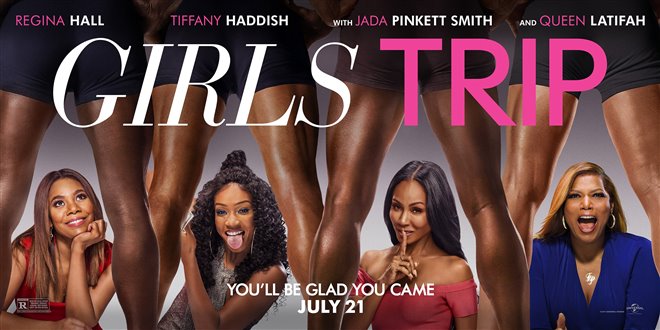
Girls Trip Defies the Box Office Rules
If you ask any box office prophet, they’ll tell you that this wasn’t supposed to happen.
See, there are three long-standing presumptions in Hollywood about what kinds of movies can become breakout hits. Put simply, you can’t have a mainstream blockbuster if your intended audience is any of the following:
- African-American
- Women
- Over 18
But Girls Trip was aimed at all three… and it worked.
A feel-good raunchy party comedy with two proven leads (Queen Latifah and Jada Pinkett-Smith) and a rising comedienne (Tiffany Haddish), Girls Trip crosses all of the invisible lines that Hollywood presumes will stop a film like this from becoming a smash.
And, in doing so, it became the only film of 2017 to earn $100M despite never appearing in 3000 theaters. (Every other film that earned $100M this year was in at least 3143 theaters, according to the annual list at Box Office Mojo.)
In addition, it’s also one of only six 2017 films to top $100M USD without earning at least $40M in its opening weekend. How does a film accomplish this feat? Through repeat viewings and stellar word of mouth.
By appealing to two of the most powerful and traditionally underserved audiences at the multiplex — women and African-Americans — Girls Trip continued 2017’s trajectory of diverse and female-led media topping the charts.
Perhaps the best symbol of this sea change is Haddish herself, who began 2017 as a buzzy newcomer and ended the year by hosting Saturday Night Live.
Rather than considering Get Out, Wonder Woman, and Girls Trip to be disconnected outliers, Hollywood may slowly be realizing that they’re joint harbingers of the coming media (r)evolution.
But first, we have dragons.

Game of Thrones Tips the Scales
More specifically, we have two words:
Ice dragon.
Granted, this this wasn’t the best episode of Game of Thrones, much less its best season.
But no other show dominates the pop culture landscape like David Benioff & D. B. Weiss’s HBO adaptation of George R. R. Martin’s fantasy-political epic. And when Jon Snow’s blatantly terrible plan backfired even worse than anyone could have possibly imagined, it set up the endgame for what should be the most talked-about final season of a TV series in history… when it returns in 2019.

A Total (Solar) Eclipse of the Heart
In a year that often felt like all the light in the world might get snuffed out, it’s fitting that nature gave us an actual solar eclipse, so the humans in the path of the totality could meditate on the relative insignificance of existence for two full minutes of total darkness.
Then, if we didn’t already get the hint that mother nature dwarfs us in size and power, she decided to double down.

Hurricane Maria Decimates Puerto Rico
Evidently, even nature follows the old storytelling trope of the rule of three.
See that picture?
No, that’s not Hurricane Maria, which killed thousands of people in Puerto Rico after millions of the U.S. territory’s citizens were left without power, clean water, or food for weeks.
That’s also not Hurricane Harvey, which caused hundreds of deaths and nearly $200B of damage when it flooded Houston with over 4 feet of water.
No, that’s a picture of Hurricane Irma, which killed over 100 people and caused $100B of damage throughout the Caribbean and the southern United States this year.
After a summer of record trauma and destruction caused by increasingly epic storms, hoping that this kind of catastrophic weather is a downward trend seems dangerously optimistic.

NASA’s Cassini Satellite Says Goodbye to Saturn
I have a confession to make.
I was this close to making a Dave Matthews band joke here, about a satellite and a crash.
Luckily, I have restraint. But I digress.
As its 19-year mission came to an end, the Cassini probe entered Saturn’s atmosphere and burned up… and, in the process, it made us all feel exceptionally sad about a machine that few of us had ever thought about but were now suddenly incredibly depressed to lose.
On its final descent, it sent back one last image of Saturn, reminding us how vast and awe-inspiring our universe truly is, how far we humans have come, and how much farther we still have to go.
Speaking of which…
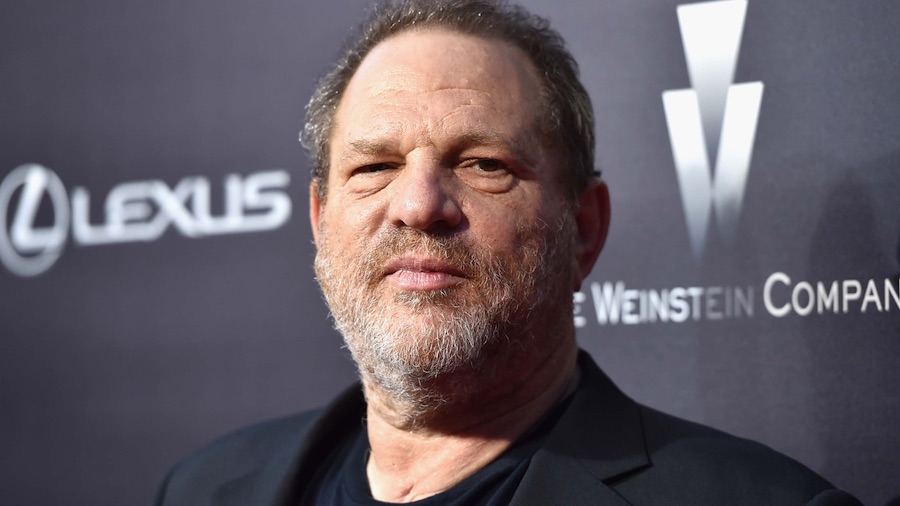
Harvey Weinstein and the Collapse of America’s Boys’ Club
Talk about a house of cards.
Remember when I said that 2017 was a year-long reaction to that very first story up top? Here’s the most obvious proof.
I think Trump’s election tore the wool off America’s eyes and forced us to confront the systems that we’re each a part of. And when an alleged abuser is able to shrug it off and get elected, the ripple effect of that moment on the American psyche is enormous.
So we started cleaning house.
And the first big domino to fall was Harvey Weinstein.
The allegations of Weinstein’s sexual misconduct and assaults in Hollywood have led to women and men across all industries speaking up about their harassment and abuse at the hands of troubled men who were corrupted by power and determined to stay on top.
Kevin Spacey… Louis CK… Matt Lauer… Al Franken… Mario Batali… it’s impossible to know how far this domino takedown will spread, how it will change the face of media and business, and what our new world will look like when longtime problems like misogyny, patriarchy, and complicity are at least partially ejected from the system.
But as these dominoes began falling, one retro-inclusive Netflix series gave us a glimpse at what a healthier version of masculinity could look like.

The Rise of Steve Harrington
Stranger Things 2 does a lot of things right.
But maybe its best twist was turning heel-with-a-heart-of-silver (if not entirely gold) Steve Harrington into the most empathetic and likable character on the show.
When Steve struggles to complete his college application essay, the realization that his high school glory days are about to end hits him hard. He feels trapped in a life he didn’t ask for, destined to take over his family’s business and never leave his hometown, like George Bailey with feathered hair.
When he tries to bury his frustrations by diving deeper into his relationship with his girlfriend Nancy, he realizes she’s torn between him and another guy… and eventually Steve loses that competition.
When he shows up at Nancy’s to apologize, not only is she out with his rival, but Steve ends up getting roped into babysitting a group of tweens during what ends up becoming the most dangerous night of their lives.
Finally, when it’s all over, Steve ends the season in the exact opposite situation from where he began two years earlier: he’s gone from being the king of the school to being beaten up, rejected, and alone.
And he does it all with a slowly dawning humility, responsibility, and grace.
If 2017 is a bottomless trash fire, then Steve Harrington is the hairspray-coiffed, nail-festooned baseball bat-wielding heartthrob who reminds us all that we’re gonna get through this fucking thing together.
And speaking of endless flames…
Not the typical morning commute… pic.twitter.com/kJIOQeqsIK
— A. Mutzabaugh CMT (@WLV_investor) December 6, 2017
Los Angeles Is Burning
In a year of vicious hurricanes, fire refused to be edged out of the Most Dangerous Elements conversation.
Like pretty much every national danger, we’ve become almost oblivious to stories about California wildfires, especially because they happen every year and people still live there so… how bad can it really be, right?
Oh.
This bad.
Got it.
With one image, 2017 will be remembered as the year the “this is fine” meme finally came to life.
Meanwhile…
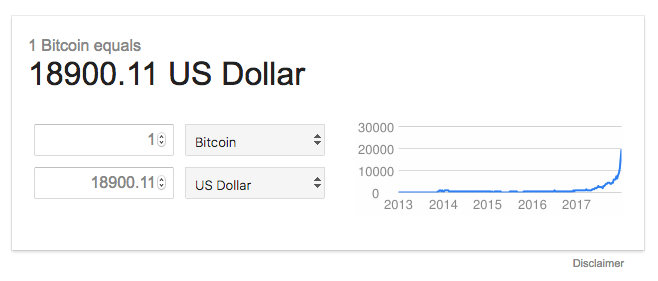
Bitcoin Goes Mainstream
If you don’t know what Bitcoin is, here’s a primer:
You buy it today for X, and you hope that someone wants it for 20X tomorrow. In the meantime, you can buy things with it wherever anyone accepts [partial redemption of] Bitcoins.
Sounds kinda like money? Sure… except that money is a tangible symbol of agreed-upon wealth transfer between two parties that’s mutually recognized by basically every society.
Sounds kinds like the stock market? Sure… except that stocks are legally-regulated ownership of a percentage of a publicly-traded company.
Sounds like a collectible? Sure… except that the value of a comic book, baseball card, or Beanie Baby is moderated by its demand, scarcity, and physical condition.
I’m not going to explain Bitcoin further, except to say that I originally typed “bitcon” and thought about just leaving it.
Surely it’s not a bubble, though.
Surely.

The Wildest Royal Engagement Yet
In 2017, a royal wedding may be the only thing I care less about than Bitcon. (Yup, I did it again.) But three things about this one stand out to me.
One, there’s the obviously tradition-flipping nature of Prince Harry getting engaged to Meghan Markle, a divorced biracial American actress. That’s like four strikes against “the way it’s always been,” happening all at the same time.
Two, there’s the fact that I’m not the only person who had to Google who Meghan Markle was when this news was announced, because she’s one of the top Google searches of 2017.
And three, I can’t think of a better bookend to the story that kicked this year off than one of the most recognizable symbols of male power proclaiming his love for someone who embodies so much of what male power would traditionally oppose.
If we need a storybook wedding every generation, at least this storybook is up to date.
And oh man, speaking of dates…

Cat Person: The Short Story That Broke Twitter
Have you read Cat Person?
Even if you haven’t, you probably have an opinion about it.
In practice, Cat Person is a short story in The New Yorker about a bad-awkward relationship. Its depiction of modern sexual politics was immensely relatable for a huge number of women, especially in this post-Weinstein year where the act of diminishing yourself to save someone else from having to face their own inadequacies is finally being recognized as a behavior worth rejecting.
But in context, Cat Person is #TheDress of 2017: a zeitgeist moment that no one could have predicted, everyone felt strongly about, and which future memes will be compared to as a result. (“I swear, this story is basically the Cat Person of 2019.”)
But unlike #TheDress (which I still think was white and gold, don’t @ me), Cat Person’s effect on the conversation isn’t about how we perceive color, but how we perceive culture.
Which brings us to the endcap of 2017, where color, culture, symbols, power, toxic masculinity, radical feminism, and corporate infallibility converge.
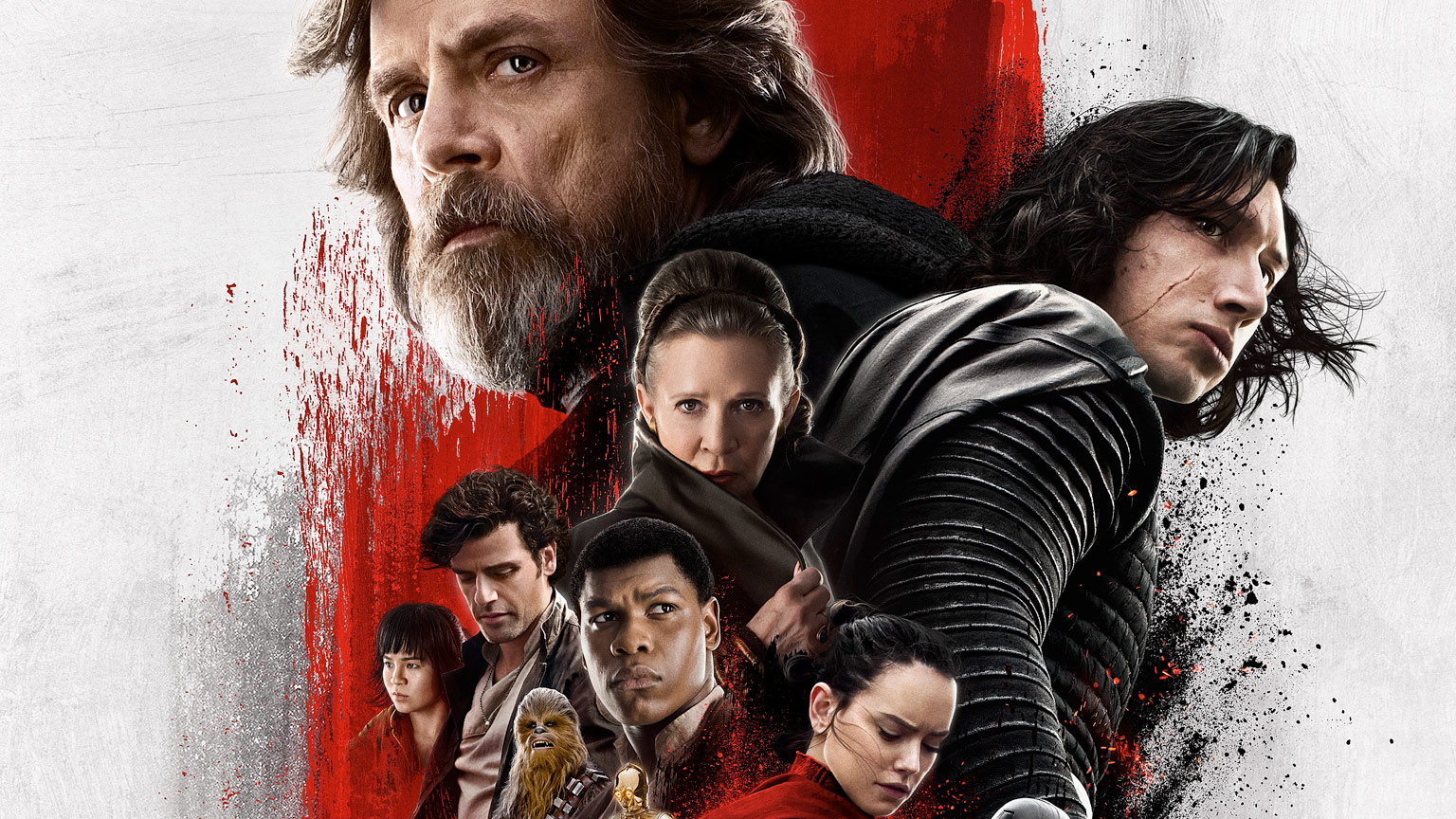
Rey, Kylo, Finn, Rose, Poe, BB-8, and the Future
Since the story of 2017 began with a polarizing inauguration, it’s fitting that the year ends with an equally polarizing blockbuster.
In 2016, Donald Trump was elected president of the United States with 57% of the electoral college vote. In 2017, The Last Jedi is considered 56% fresh at Rotten Tomatoes.
Donald Trump came to Washington to “drain the swamp”… but he’s only succeeded in making it murkier, losing the goodwill of a majority of Americans in the process.
Rian Johnson took the reins of the biggest blockbuster franchise in the world… and succeeded in alienating half of the franchise’s fans by delivering a film that was either “too much like the old Star Wars” or “not enough like the old Star Wars,” depending on who you ask.
And, regardless, both Donald Trump and The Last Jedi will end 2017 having made unimaginable amounts of money despite being hated by roughly half the people who encounter them. (The Last Jedi already opened to $220M USD, making it the second-largest domestic opening of all-time… behind only 2015’s previous Star Wars entry, The Force Awakens.)
Personally, I was indifferent to The Last Jedi. I liked some things, and I didn’t like others. But I’m not a huge Star Wars fan to begin with, so I don’t have a personal stake in the franchise’s success — especially when it’s owned by Disney, who will eventually own us all, so analyzing their business choices is almost moot.
However.
As a story, I believe The Last Jedi is actually the perfect capsule summary of 2017, for three reasons.
First, there’s the obvious upside to having a diverse, inclusive, and widely-representative cast in one of the biggest and most influential movie franchises of all time. As I’ve written before, the issue of who gets to tell our stories is critically important to the future of our planet.
Second, there’s the matter of ignoring expectations. As Sean Fennessey expertly summarizes at The Ringer:
One of the brilliant aspects of The Last Jedi is writer-director Rian Johnson’s willingness to dispel and detonate all of the red herrings that emerged from the film that preceded his. Rey’s parents? Who cares. Will Luke return to fight? Whatever. Who is Snoke? Why bother.
Some fans of the series are outraged that Johnson would be so glib about what they believe are critical plot points. Their outrage isn’t necessarily “wrong,” since everyone’s entitled to their opinion of what they do and don’t enjoy. But all this outrage is sadly misdirected.
After nearly 20 years of J.J. Abrams’s fabled “mystery box” storytelling style, audiences have been conditioned to Study Every Detail and Care Very Much. Their newly-honed instinct for obsessive analysis is further amplified by the “fan theory” culture of Reddit and YouTube, where self-appointed cultural detectives spend countless hours poring over the details of Wikipedia pages and secondhand lore to concoct their own meticulously researched explanations of What’s Going to Happen Next in your favorite story.
But The Last Jedi at least temporarily defuses all of that. Even “worse,” according to some purists, he forces Luke and Leia to behave in ways that don’t match their well-established characters or the ethos of Star Wars as a whole.
What these fans seem to forget is that the ethos of Star Wars is ever-changing.
Star Wars is literally built on the principle that every person is capable of change — for better and for worse — and that daily life is a perpetual struggle to do what’s right even when it would be so much easier to do what’s easy, expedient, or self-satisfying.
It is also, less nobly, built on the greying wisps of Buck Rogers cliffhangers, DIY special effects, inconsistent character behaviors, redundant plot twists, questionable tone shifts, and sanitized corporate merchandising.
In short: there is no consensus on what a Star Wars movie “is,” or how the characters “should” behave. Instead, there’s a shared universe of collaborative artistic perspectives that average out to an optimistic grey area in the middle of the galaxy, where — all things being equal — the scales tilt toward the positive, both in terms of quality and of optimism.
And that brings me to the final reason why The Last Jedi perfectly encapsulates 2017:
The power of the individual.
Rey is important not because of who her parents were, but because of what she does.
Rey’s rise proves that the force is alive in everyone, not just in the Skywalker bloodline or in those destined to become Jedi. And as the stable boy at the very end of the movie demonstrates, each of us has the power to create change in our world, no matter how privileged or how lowly we are.
Will we choose the light side or the dark?
Will we choose to make life better or worse for others?
The truth is: we’re going to do both.
You can’t have the Jedi without the Sith, or the light without the dark. The key, as this movie (and our year of stories) seems to be telling us, is to embrace the grey.
Find your balance, fight for what you love, learn from your mistakes, be willing to forgive, and stop holding yourself and others to standards of unreachable perfection.
And, most of all, never give up hope: in others… in the universe… in the ability of a year, a story, or a moment to turn itself around…
But, mostly, never give up hope in yourself.
hey girl am i a Death Star
because i feel like you should keep trying to rebuild me in spite of my obvious flaws and the lives i’ve destroyed— Emo Kylo Ren (@KyloR3n) December 17, 2017
If You Enjoyed This Post
… then you may also like this post about the surprising theme in Pixar’s Coco, or this post about the secret ingredient to every great story.


0 Comments